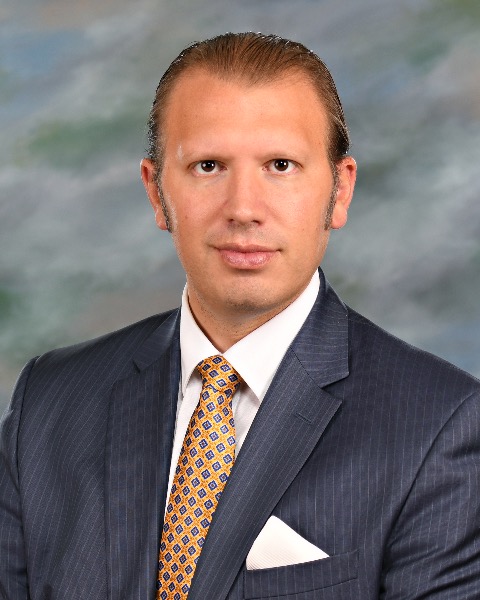Deformity
Factors Associated with the Maintenance of Cost-Effectiveness at 5 Years in Adult Spinal Deformity
Friday, February 21, 2025
7:00 AM - 2:00 AM EST

Peter G. Passias, MD
Professor
Duke University
Duke University Heath System
New Canaan, CT, US
Presenting Author(s)
Introduction: Cost-utility analysis approximates the ratio of cost of an intervention to the benefit in quality-adjusted life years. The cost-utility of adult spinal deformity corrective surgery has been previously reported on, however the long-term cost-utility of thoracolumbar deformity corrective surgery remains to be elucidated.
Methods: ASD patients with baseline (BL) and 5-year post-operative (5Y) data were included. Descriptive analysis identified demographics, radiographic parameters, and surgical factors. Published methods for cost was calculated using the PearlDiver database and CMS.gov definitions. Cost analysis was based on average DRG reimbursement and QALY analysis used ODI converted to SF-6D using published methods, with a 3% discount applied for residual decline to life expectancy(LE). Cost per QALY(CU) at 2Y and 5Y was calculated. Patients that maintained CU were compared relative to those that failed to maintain cost-utility at 5Y.
Results: 299 patients with 5Y follow up were included. Baseline demographics: Age 57.0±15.9 years, 80.9% F, BMI 27.4±6.2kg/m2, CCI 1.46±1.67. Rates of cost-utility Baseline ODI of 46.8±18.5, with 2 year and last follow up ODI of 27.5±19.7 and 28.1±20.1 respectively. Surgical characteristics consisted of 12.8±3.5 levels fused, with mean UIV of T7, 83% having osteotomies, 72% decompression, and 67% IBF, 0.3% had anterior approach, 69.9% had posterior, and 29.8% had combined. 36.5% of patients had minor complications, 26.1% had major, and 20.7% had reoperations. Mean cost associated with index procedure was $89,379±42,639, with utility gained of 0.0753±0.0871. 5 year QALY was 0.146±0.141, with cost
Conclusion : 299 patients with 5Y follow up were included. Baseline demographics: Age 57.0±15.9 years, 80.9% F, BMI 27.4±6.2kg/m2, CCI 1.46±1.67. Rates of cost-utility Baseline ODI of 46.8±18.5, with 2 year and last follow up ODI of 27.5±19.7 and 28.1±20.1 respectively. Surgical characteristics consisted of 12.8±3.5 levels fused, with mean UIV of T7, 83% having osteotomies, 72% decompression, and 67% IBF, 0.3% had anterior approach, 69.9% had posterior, and 29.8% had combined. 36.5% of patients had minor complications, 26.1% had major, and 20.7% had reoperations. Mean cost associated with index procedure was $89,379±42,639, with utility gained of 0.0753±0.0871. 5 year QALY was 0.146±0.141, with cost
Methods: ASD patients with baseline (BL) and 5-year post-operative (5Y) data were included. Descriptive analysis identified demographics, radiographic parameters, and surgical factors. Published methods for cost was calculated using the PearlDiver database and CMS.gov definitions. Cost analysis was based on average DRG reimbursement and QALY analysis used ODI converted to SF-6D using published methods, with a 3% discount applied for residual decline to life expectancy(LE). Cost per QALY(CU) at 2Y and 5Y was calculated. Patients that maintained CU were compared relative to those that failed to maintain cost-utility at 5Y.
Results: 299 patients with 5Y follow up were included. Baseline demographics: Age 57.0±15.9 years, 80.9% F, BMI 27.4±6.2kg/m2, CCI 1.46±1.67. Rates of cost-utility Baseline ODI of 46.8±18.5, with 2 year and last follow up ODI of 27.5±19.7 and 28.1±20.1 respectively. Surgical characteristics consisted of 12.8±3.5 levels fused, with mean UIV of T7, 83% having osteotomies, 72% decompression, and 67% IBF, 0.3% had anterior approach, 69.9% had posterior, and 29.8% had combined. 36.5% of patients had minor complications, 26.1% had major, and 20.7% had reoperations. Mean cost associated with index procedure was $89,379±42,639, with utility gained of 0.0753±0.0871. 5 year QALY was 0.146±0.141, with cost
Conclusion : 299 patients with 5Y follow up were included. Baseline demographics: Age 57.0±15.9 years, 80.9% F, BMI 27.4±6.2kg/m2, CCI 1.46±1.67. Rates of cost-utility Baseline ODI of 46.8±18.5, with 2 year and last follow up ODI of 27.5±19.7 and 28.1±20.1 respectively. Surgical characteristics consisted of 12.8±3.5 levels fused, with mean UIV of T7, 83% having osteotomies, 72% decompression, and 67% IBF, 0.3% had anterior approach, 69.9% had posterior, and 29.8% had combined. 36.5% of patients had minor complications, 26.1% had major, and 20.7% had reoperations. Mean cost associated with index procedure was $89,379±42,639, with utility gained of 0.0753±0.0871. 5 year QALY was 0.146±0.141, with cost

.jpg)